1 Constant Directivity Beamforming
1.1 Introduction
1.2 Problem Formulation
1.3 Theoretical Solution
1.3.1 Continuous sensor
1.3.2 Beam-shaping function
1.4 Practical Implementation
1.4.1 Dimension-reducing parameterization
1.4.2 Reference beam-shaping filter
1.4.3 Sensor placelllent
1.4.4 SUllllllary of illlplelllentation
1.5 Examples
1.6 Conclusions
2 Superdirective Microphone Arrays
2.1 Introduction
2.2 Evaluation of Beamformers
2.2.1 Array-Gain
2.2.2 Beampattern
2.2.3 Directivity
2.2.4 Front-to-Back Ratio
2.2.5 White Noise Gain
2.3 Design of Superdirective Beamformers
2.3.1 Delay-and-Sum Beamformer
2.3.2 Design for spherical isotropic noise
2.3.3 Design for Cylindrical Isotropic Noise
2.3.4 Design for an Optimal Front-to-Back Ratio
2.3.5 Design for Measured Noise Fields
2.4 Extensions and Details
2.4.1 Alternative Form
2.4.2 Comparison with Gradient Microphones
2.5 Conclusion
3 Post-Filtering Techniques
3.1 Introduction
3.2 Multi-channel Wiener Filtering in Subbands
3.2.1 Derivation of the Optimum Solution
3.2.2 Factorization of the Wiener Solution
3.2.3 Interpretation
3.3 Algorithms for Post-Filter Estimation
3.3.1 Analysis of Post-Filter Algorithms
3.3.2 Properties of Post-Filter Algorithms
3.3.3 A New Post-Filter Algorithm
3.4 Performance Evaluation
3.4.1 Simulation System
3.4.2 Objective Measures
3.4.3 Simulation Results
3.5 Conclusion
4 Spatial Coherence Functions for Differential Microphones in Isotropic NoiseFields
4.1 Introduction
4.2 Adaptive Noise Cancellation
4.3 Spherically Isotropic Coherence
4.4 Cylindrically Isotropic Fields
4.5 Conclusions
5 Robust Adaptive Beamforming
5.1 Introduction
5.2 Adaptive Beamformers
5.3 Robustness Problem in the GJBF
5.4 Robust Adaptive Microphone Arrays - Solutionsto Steering-Vector Errors
5.4.1 LAF-LAF Structure
5.4.2 CCAF-LAF Structure
5.4.3 CCAF-NCAF Structure
5.4.4 CCAF-NCAF Structure with an AMC
5.5 Software Evaluation of a Robust AdaptiveMicrophone Array
5.5.1 Simulated Anechoic Environment
5.5.2 Reverberant Environment
5.6 Hardware Evaluation of a Robust AdaptiveMicrophone Array
5.6.1 Implementation
5.6.2 Evaluation in a Real Environment
5.7 Conclusion
6 GSVD-Based Optimal Filtering forMulti-Microphone Speech Enhancement
6.1 Introduction
6.2 GSVD-Based Optimal Filtering Technique
6.2.1 Optimal Filter Theory
6.2.2 General Class of Estimators
6.2.3 Symmetry Properties for Time-Series Filtering
6.3 Performance of GSVD-Based Optimal Filtering
6.3.1 Simulation Environment
6.3.2 Spatial Directivity Pattern
6.3.3 Noise Reduction Performance
6.3.4 Robustness Issues
6.4 Complexity Reduction
6.4.1 Linear Algebra Techniques for Computing GSVD
6.4.2 Recursive and Approximate GSVD-Updating Algorithms
6.4.3 Downsampling Techniques
6.4.4 Simulations
6.4.5 Computational Complexity
6.5 Combination with ANC Postprocessing Stage
6.5.1 Creation of Speech and Noise References
6.5.2 Noise Reduction Performance of ANC PostprocessingStage
6.5.3 Comparison with Standard Beamforming Techniques
6.6 Conclusion
7 Explicit Speech Modeling for MicrophoneArray Applications
7.1 Introduction
7.2 Model-Based Strategies
7.2.1 Example 1: A Frequency-Domain Model-Based Algorithm
7.2.2 Example 2: A Time-Domain Model-Based Algorithm
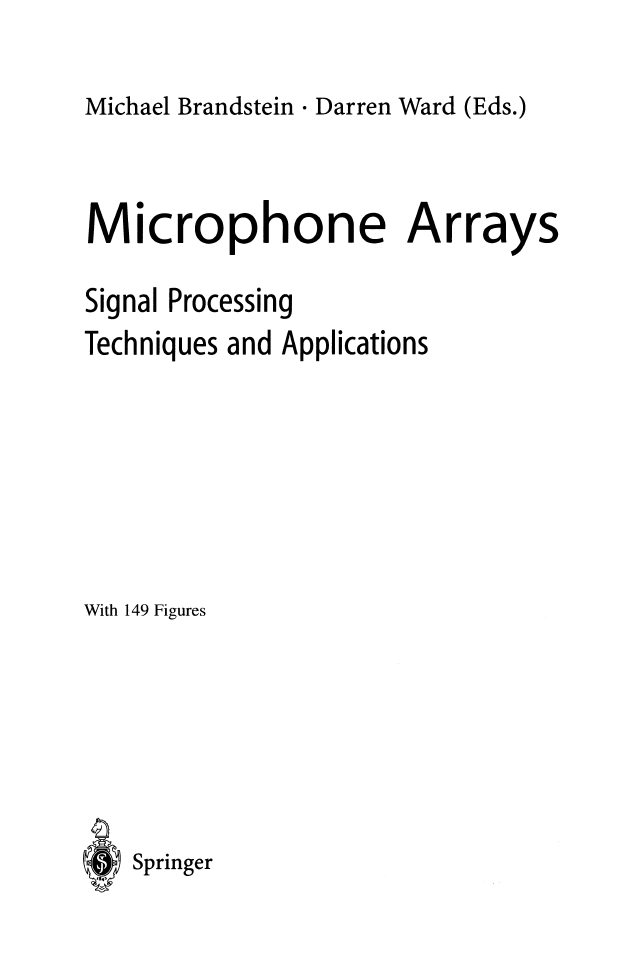
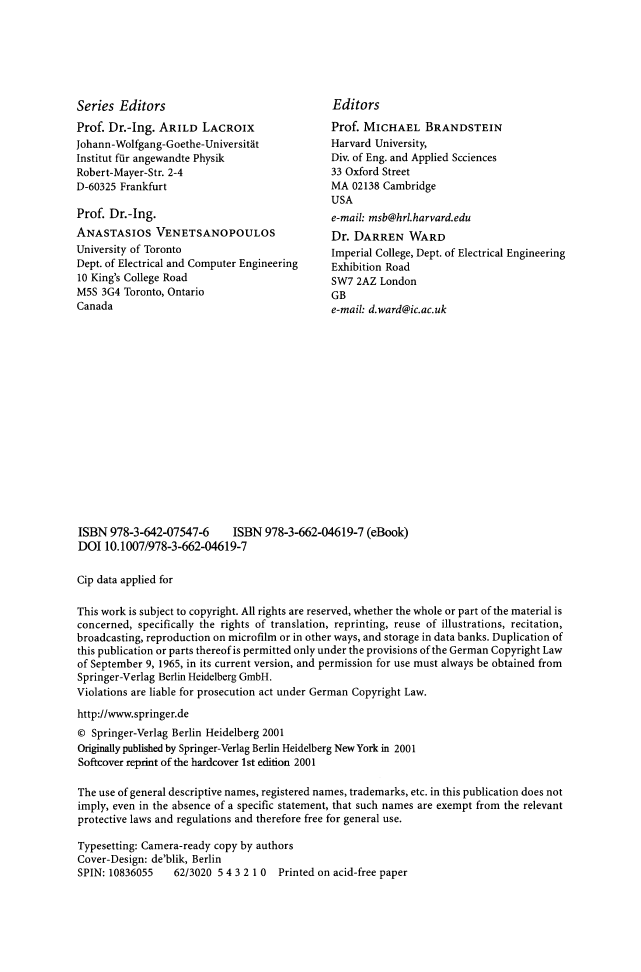
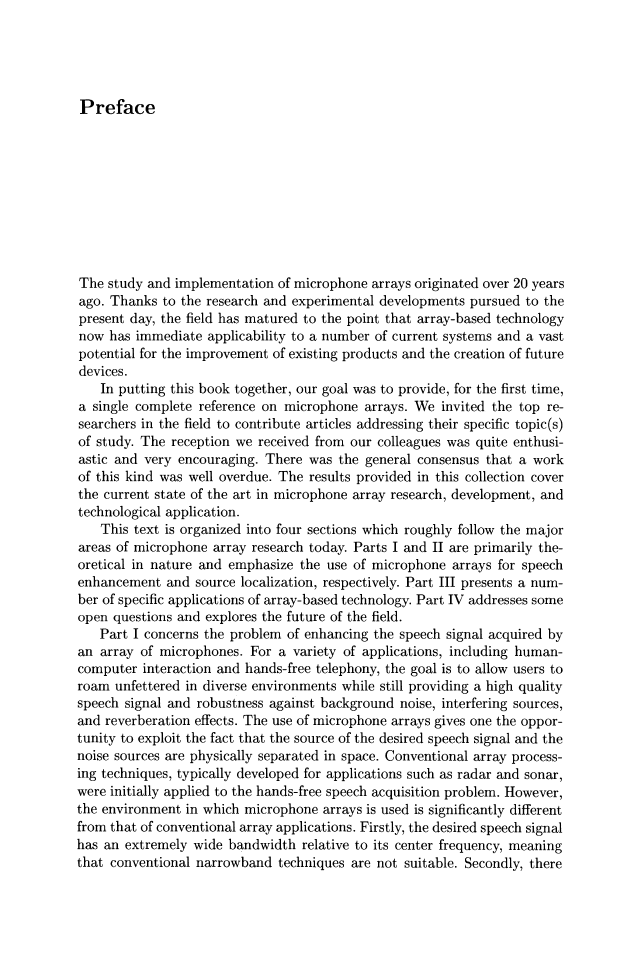


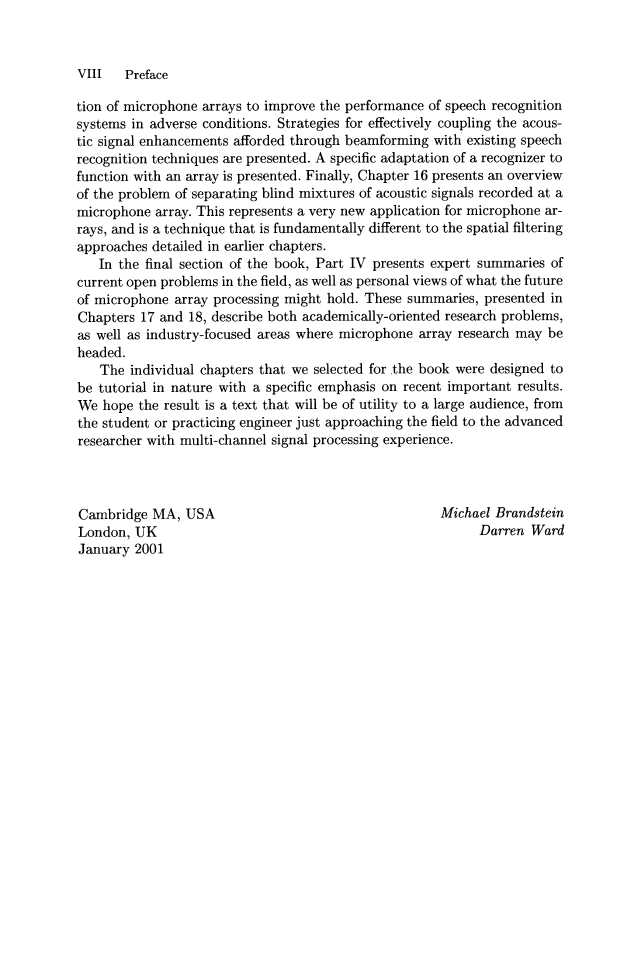

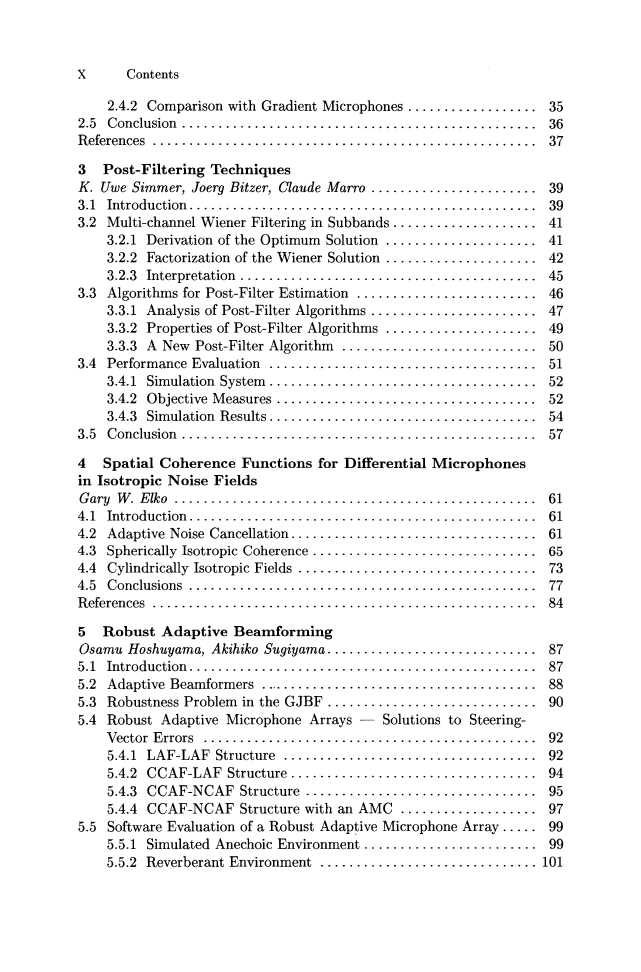








 2023年江西萍乡中考道德与法治真题及答案.doc
2023年江西萍乡中考道德与法治真题及答案.doc 2012年重庆南川中考生物真题及答案.doc
2012年重庆南川中考生物真题及答案.doc 2013年江西师范大学地理学综合及文艺理论基础考研真题.doc
2013年江西师范大学地理学综合及文艺理论基础考研真题.doc 2020年四川甘孜小升初语文真题及答案I卷.doc
2020年四川甘孜小升初语文真题及答案I卷.doc 2020年注册岩土工程师专业基础考试真题及答案.doc
2020年注册岩土工程师专业基础考试真题及答案.doc 2023-2024学年福建省厦门市九年级上学期数学月考试题及答案.doc
2023-2024学年福建省厦门市九年级上学期数学月考试题及答案.doc 2021-2022学年辽宁省沈阳市大东区九年级上学期语文期末试题及答案.doc
2021-2022学年辽宁省沈阳市大东区九年级上学期语文期末试题及答案.doc 2022-2023学年北京东城区初三第一学期物理期末试卷及答案.doc
2022-2023学年北京东城区初三第一学期物理期末试卷及答案.doc 2018上半年江西教师资格初中地理学科知识与教学能力真题及答案.doc
2018上半年江西教师资格初中地理学科知识与教学能力真题及答案.doc 2012年河北国家公务员申论考试真题及答案-省级.doc
2012年河北国家公务员申论考试真题及答案-省级.doc 2020-2021学年江苏省扬州市江都区邵樊片九年级上学期数学第一次质量检测试题及答案.doc
2020-2021学年江苏省扬州市江都区邵樊片九年级上学期数学第一次质量检测试题及答案.doc 2022下半年黑龙江教师资格证中学综合素质真题及答案.doc
2022下半年黑龙江教师资格证中学综合素质真题及答案.doc